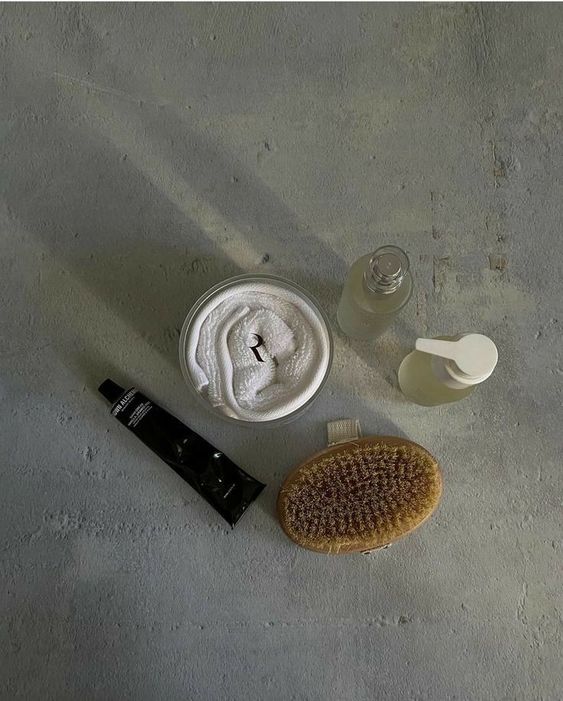
With the beauty and skincare industry booming, consumers are becoming more and more aware of the products they use. One of the essential aspects of making informed choices is understanding cosmetic ingredient labels, commonly known as International Nomenclature of Cosmetic Ingredients (INCI) lists. These labels can often be intimidating with their scientific names, but with a little knowledge and guidance, anyone can decode them. In this article, we will delve into the world of cosmetic INCIs, exploring what they are, why they matter, and how to interpret them to make more informed and healthier choices for your skin and overall well-being.
The Lowdown On INCI
INCI, or International Nomenclature of Cosmetic Ingredients, is a standardized system for naming cosmetic ingredients globally. This system was established by the International Cooperation on Cosmetic Regulation (ICCR) to ensure transparency and consistency in labeling cosmetic products. Each ingredient used in cosmetics is assigned a unique name based on scientific nomenclature, typically derived from the Latin language, which allows consumers, manufacturers, and regulatory authorities to identify and understand the components of a particular product.
Ingredients are usually listed with their INCI (International Nomenclature of Cosmetic Ingredients) name first, followed by their common name in brackets. For example, Rosmarinus Officinalis (Rosemary) Extract is obtained from the dried leaves of rosemary. All substances with concentrations greater than 1% must be stated in decreasing order of predominance. This implies that the first item on the list is always the one with the highest concentration. As a rule of thumb, the first three to five ingredients account for around 80% of the composition.
On the other hand, ingredients present at 1% or less can be stated in any order. Yep, in any order provided they come after the ingredients above 1%. In skincare, this point is known as the 1% line. This practice is very sly as some brands can trick you into buying products that don’t do what they promise.
How to read a cosmetic label
and identify the 1% line? By law, some preservatives, emulsifiers and thickening agents are only allowed up to 1%. Here are some of them:- Phenoxyethanol
- Parabens
- Sodium benzoate
- Potassium Sorbate
- Xanthan gum
- Guar Gum
- Hydroxyethylcellulose
- Polyethylene glycols
If you see a product that says “made with aloe vera and vitamin C for glowing skin”, but these
clean ingredients
come after the preservatives, you should be suspicious. Chances are, they are so low in concentration that they won’t do anything for your skin. All those fancy-sounding ingredients are added for marketing purposes. You might as well be throwing your money away.But don’t worry, the 1% line can also work in your favor. If you have sensitive skin and want to avoid certain ingredients, you can look for them below the 1% line and know that they won’t bother you too much.
Of course, the 1% line is not a magic number. Some ingredients work better at lower concentrations, like retinol and peptides which are only needed in minute concentrations. The best way to find out if a product works for you is to try it yourself and see the results. But don’t let the brands fool you; use the 1% line as a guide to make smarter choices for your skin.
Beyond Ingredients: Unveiling Hidden Clues on Cosmetic Labels

-
Active skincare ingredients:
These are the stars of the show. They are the ones that do the magic and give the product its purpose. They are usually in smaller amounts, but they pack a punch. Examples: Ascorbyl glucoside, salicylic acid, etc. - Inactive
skincare ingredients
: These are the supporting cast. They make up most of the product and help it work better. They might include things like fillers, preservatives, and other extras. Examples: Glyceryl stearate, sodium hydroxide, etc. - Avoid harmful skincare ingredients: Identify and understand potentially toxic ingredients commonly found in cosmetics, such as parabens, sulfates, phthalates, formaldehyde, petrochemicals, and artificial colors.
- Don't be fooled by different names: Some ingredients have more than one name or nickname, which can be confusing. For example, "Vitamin E" can also go by "Tocopherol." Know these aliases to spot ingredients correctly.
- Watch out for Fragrance: The word "fragrance" or "parfum" is often used to hide the secret recipe of a scent (literally, thousands of ingredients). Sadly, the FDA doesn't require companies to tell you what's in their fragrance mix, which can be annoying for those who are allergic to some scents. In the EU, potential allergens derived from smells and essential oils must be indicated at the end of an INCI list and are denoted by a star or italic font.
- Look for symbols: Some symbols may show up on cosmetic labels to tell you more about the product. For example, a "PAO" symbol (Period After Opening) shows how long you can use the product after opening it. The "Leaping Bunny" or "Beauty Without Bunnies" symbols show that the product is kind and not tested on animals. A "Green Dot" symbol shows that the maker of the package has paid some money to help recycle it. A "Fair Trade" symbol means that producers in developing nations get paid well, have good working conditions, and are treated justly by their buyers. The "FSC" (Forest Stewardship Council) certification ensures that the product is sourced responsibly and that the company promotes forest conservation and other social benefits.
- Look for resources: If you are curious or have no clue about an ingredient, you can use online resources to find more details about it. For example, you can use the Cosmetic Ingredient Dictionary to look up what an ingredient does and means. You can also use EWG's Skin Deep Database as your main website to check skincare ingredients (how safe and risky they are).
What about the FDA?
You might think that the FDA has a tight grip on cosmetics, but that’s not the case. The FDA can’t stop you from selling or buying cosmetics that are bad for you, unless they have fake or misleading labels[1]. The only thing the FDA checks before cosmetics hit the shelves is the color additives[1]. Everything else is up to the makers and sellers of cosmetics.
That’s right, it’s their job to make sure their products are safe for you to use[1]. They don’t have to follow any specific rules or tests to prove it. And they don’t have to tell the FDA anything about their safety data. It’s like a trust exercise but with your skin and hair.
Also, and FYI, there is no explicit law regulating or governing the use of the word "hypoallergenic" or related claims (i.e., cosmeceuticals, dermatologically tested)[2]. With regards to natural, organic, gluten-free and non-GMO symbols, they may be displayed on the front labels as long as the formula meets the standards of the international organizations that verify such claims (USDA Organic, ECO Cert, etc.)[3].
Bringing It All Together

Understanding INCIs in cosmetics is crucial for making informed choices about the products we use on our skin and hair. By deciphering these skincare ingredient lists, we can determine which products align with our preferences, skin type, and potential sensitivities. Armed with this knowledge, consumers can navigate the vast world of cosmetics with confidence and select products that promote healthy and beautiful skin. Remember, knowledge is power, especially when it comes to taking care of our bodies and well-being. To learn more about the ingredients we use in Rosafa Skincare, make sure to visit our website as well as our social media platforms on Instagram, Facebook, Pinterest, and LinkedIn.
References:
[2]https://www.fda.gov/cosmetics/cosmetics-labeling-claims/hypoallergenic-cosmetics
[3]https://www.ams.usda.gov/sites/default/files/media/OrganicCosmeticsFactSheet.pdfƒ





